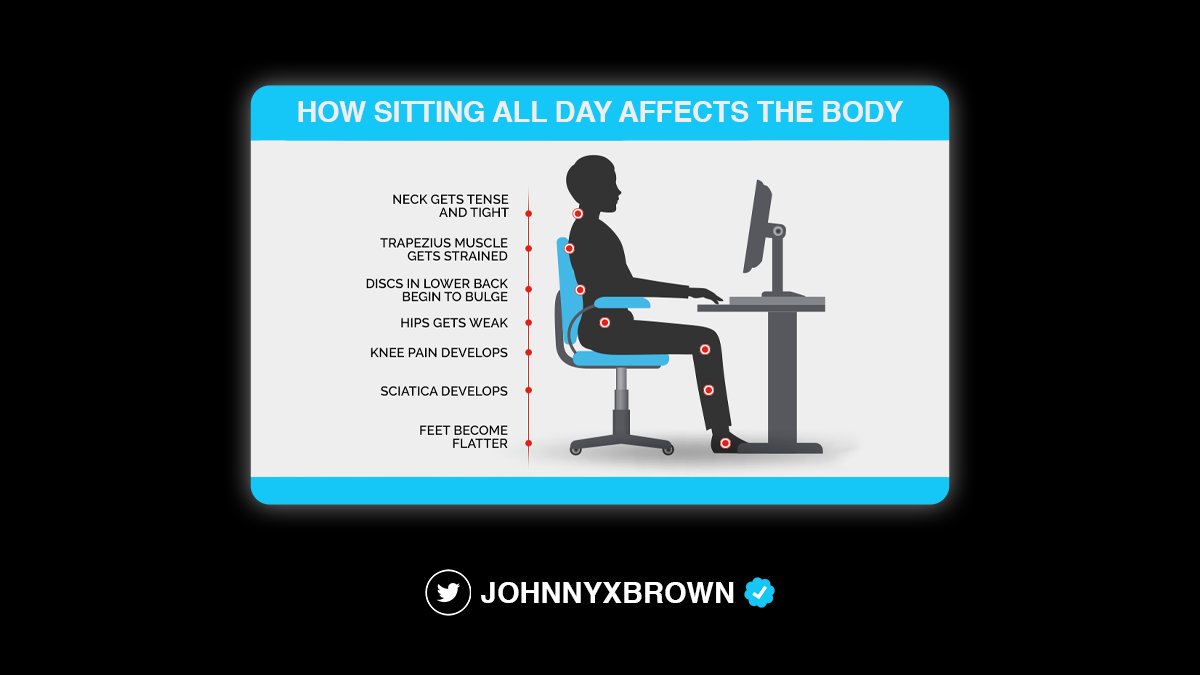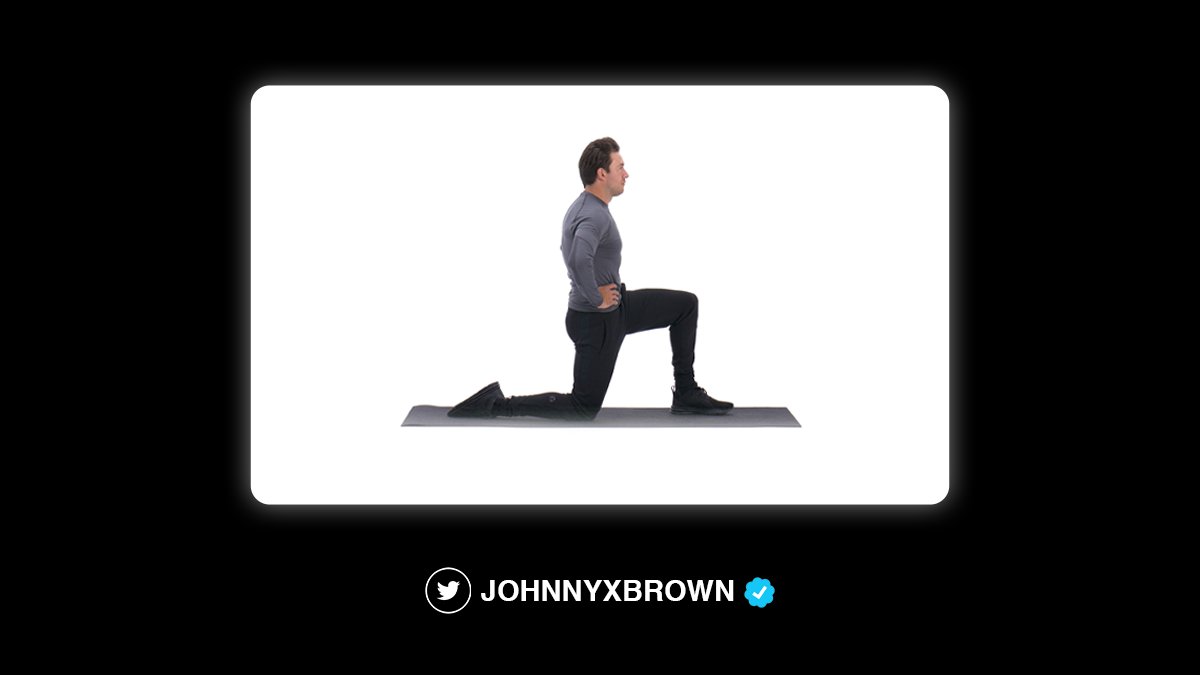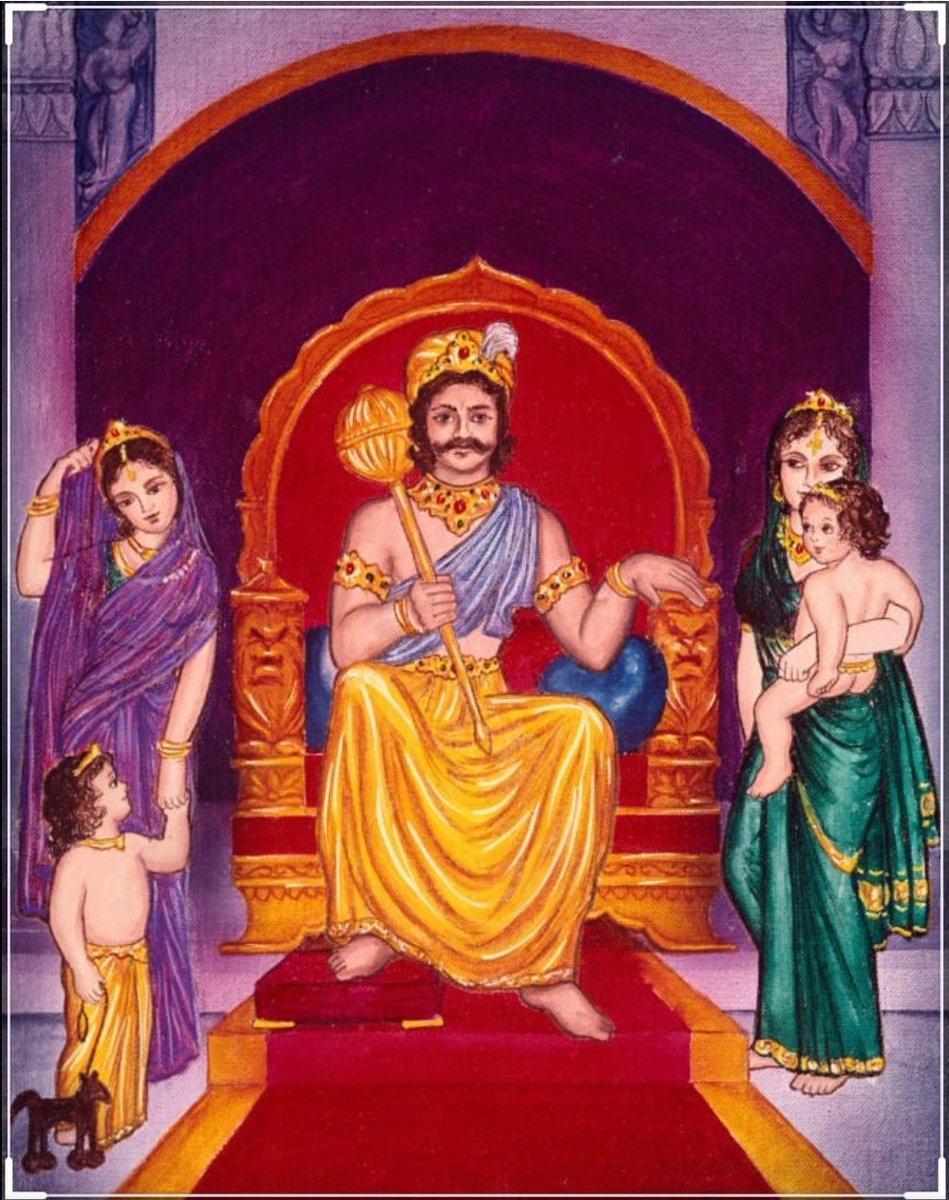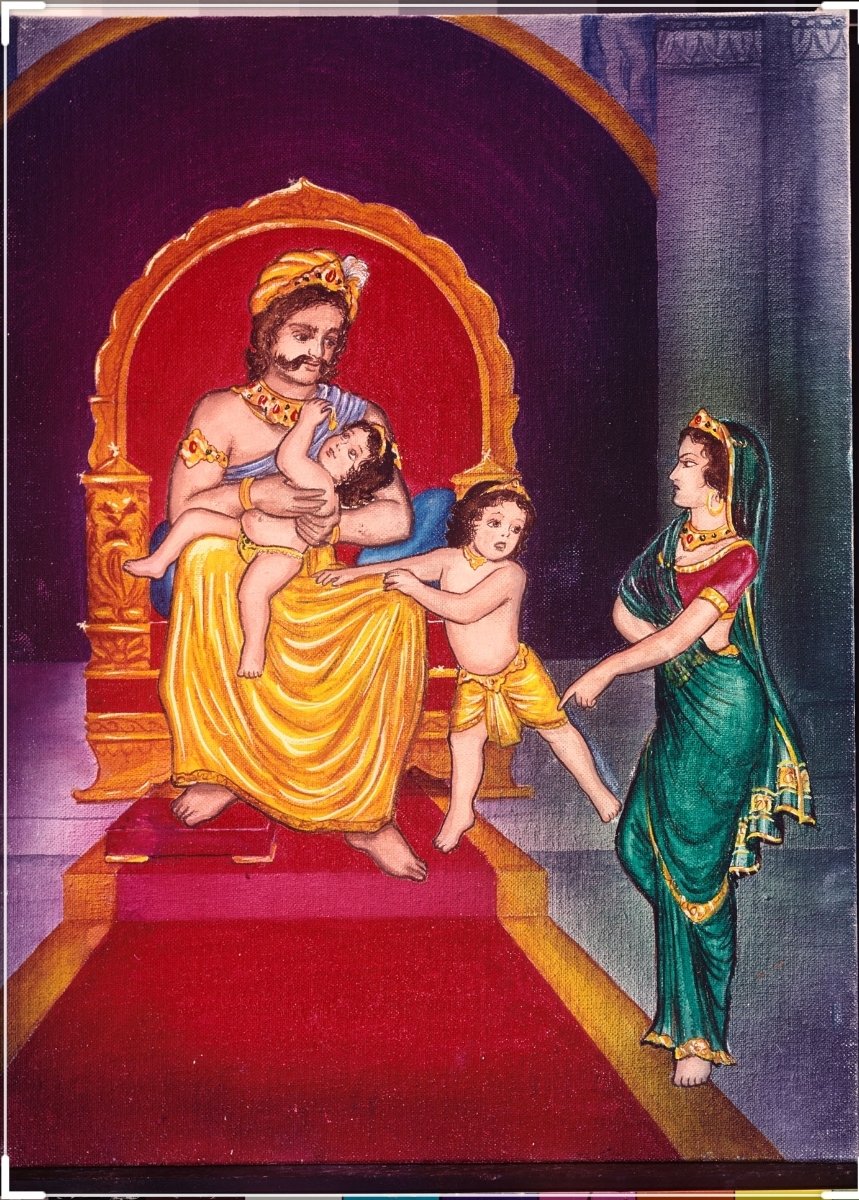16 million adults experience chronic back pain.
It's a leading cause of career disability, and it can make daily activities unbearable.
As careers continue to encourage prolonged sitting, our backs will continue to pay the price.
Here's how you can "deskproof" your back:
1. Thoracic Extension
The thoracic spine is the region between your upper and middle back.
It is responsible for 80% of trunk rotation movements.
Poor thoracic health is a leading cause of mobility restrictions.
This stretch reduces pain and tension and improves mobility.
2. Hip Flexor Stretch
When you sit all day, your hip flexors become weak.
This can lead to problems with posture and stability, and can even lead to more serious hip injuries later in life.
This stretch reverses the negative effects of sitting on your hips.
3. Glute Bridges
The glutes are a key muscle group that extends your hips and takes the pressure off your lower back.
The glute bridge is a great exercise for strengthening your glutes and increasing your core strength and overall stability.
4. Seated Twists
This simple movement stretches your neck, chest, and shoulders, as well as your upper and lower back.
If you do these regularly, you’ll strengthen your core, relieve back pain, and improve your overall mobility.
Run through these 4 exercises 2x a week, and you’ll start noticing less back pain in no time!
Remember, these are meant to improve flexibility and reduce pain. Start slow and build up as you can.
Here’s a great place to start:
An office hack for minimizing back pain:
Use a standing desk.
Many allow you to swap between sitting and standing at the press of a button.
This encourages you to spend time on your feet instead of slouched down in a chair.
It's a small investment with a big return.
Start now!
You'll never regret taking care of your body.
Invest time in your health now so that you can enjoy the life you’re working so hard to build for yourself.
For more insights like these, follow me
@johnnyxbrown! Retweet to save a back! 💪👇
https://t.co/inifgxIrVL
If you're interested in seeing more content like this, please sign up for my newsletter! ⚡️
It's free and only takes 1 click to subscribe:
https://t.co/EKF0sq8OVO












